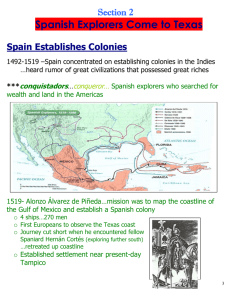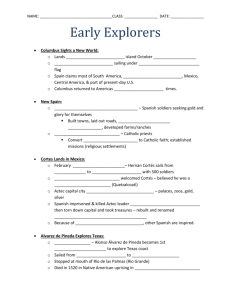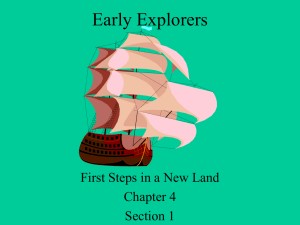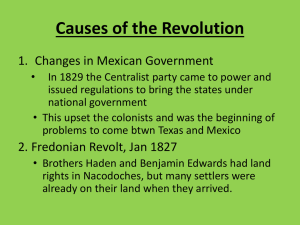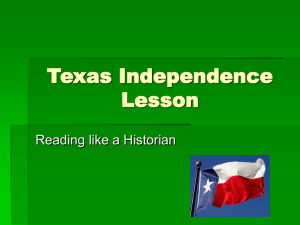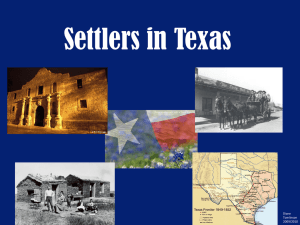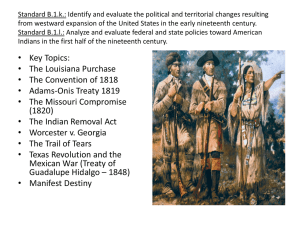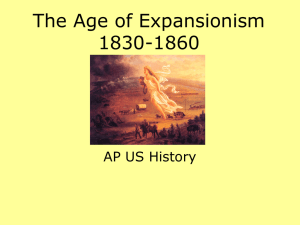Unit 2 - Famous Explorers Notes
advertisement
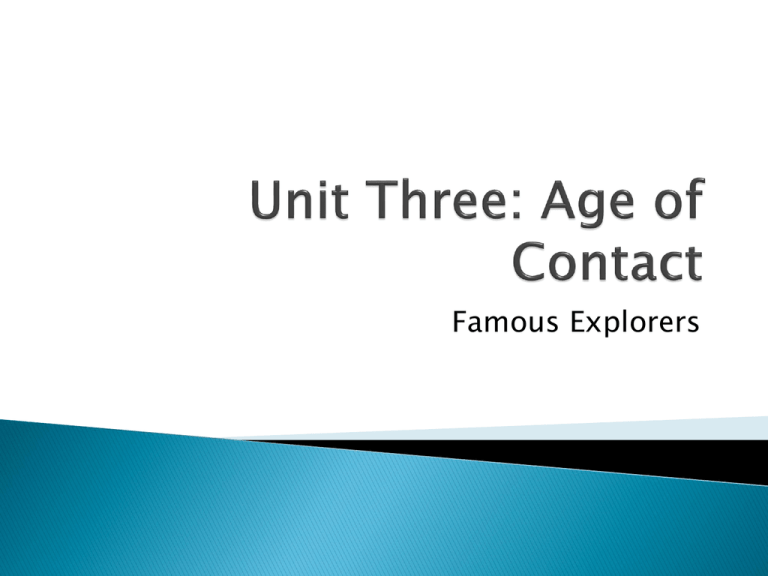
Famous Explorers There were Four main reasons why Europeans took the risk to explore the New World, including Texas: 1. God – to spread the Catholic religion to any natives they met 2. Gold – to find gold for themselves and the country financing the expedition 3. Glory – to receive recognition for exploration in the New World 4. Land – to claim land for their mother country Pineda was the first European to see and map the Texas Gulf Coast in 1519. He was trying to find a northern waterway to the Pacific Ocean and Asia from Jamaica. His maps included rivers that he named Espiritu Santo (what we now call the Mississippi River) and the Rio de las Palmas (the Rio Grande River). In 1527, Narváez led a voyage from Spain to the Gulf of Mexico, hoping to find gold and other treasures in the New World. Narváez and 600 soldiers reached Florida by 1528. They arrived and met a Native American with gold. They asked the native where they could find some, and he told them how to get to a place north of the Florida coast called Apalachee. Narváez sent half his men back to find a harbor to dock the ship, while the other 300 went with him to look for gold. They then got lost in the Florida swamplands. Many died from starvation, wounds, and fights with Native Americans. Those still alive decided to go back and look for their ship, but when they got back, it was gone. The other 300 soldiers had left to return to Spain, knowing the others had gotten lost. Stranded and starving to death, the soldiers began to build boats out of materials they found on the shore. They set sail off the coast of Florida, but the current took them west into the Gulf of Mexico. After several weeks, the boats shipwrecked onto an island off the coast of Texas - which some believe may have been Galveston Island. Cabeza de Vaca was one of the soldiers stranded with Narváez. He and the others named the island Malhado, meaning “misfortune.” Narváez died when the boats shipwrecked onto the island. Those that survived were left without food, water, or shelter, and many died. Those that lived were held captive and forced to work for the Karankawa. Cabeza de Vaca survived in the Karankawa village for many years, working as a servant and healer. Years later, Cabeza de Vaca met three other explorers for the Narváez expedition who had been taken as slaves by the Coahuiltecan. One was a North African named Estevanico. The four men eventually escaped together and traveled from one American Indian village to another in search of Mexico, where they hoped to find other Spaniards. They survived because Estevanico was able to speak many of their languages and by helping heal sick Natives. Almost eight years after their shipwreck off the Texas coast, the four explorers came across a group of Spanish soldiers, who took them to Mexico City. Cabeza de Vaca eventually returned to Spain and published a book about his travels and the Native American way of life in 1542. He was the first European to see the American buffalo. Coronado was a Spanish explorer sent out to find treasure in the fabled Seven Cities of Cibola. He searched throughout Texas, New Mexico, and Arizona, though he found no gold. While searching, he was the first European to explore and write about the panhandle of Texas. One of the groups that he sent out to search became the first Europeans to see the Grand Canyon. Coronado returned to Mexico City after two years of searching. He reported to the Spanish officials upon his return, saying that the land in Texas was similar to Spain. He also told them that the many heard of buffalo could be a source of wealth. Still, his expedition was considered a failure because he did not find gold. La Salle was a French explorer sent by King Louis XIV in order to colonize Texas and claim it for France. He established Ft. Saint Louis, but the colony soon failed because of disease, failed crops, Indian attacks, and a lack of leadership. Though he failed to settle Texas, he did claim Louisiana and much of the Mississippi River basin for France.

